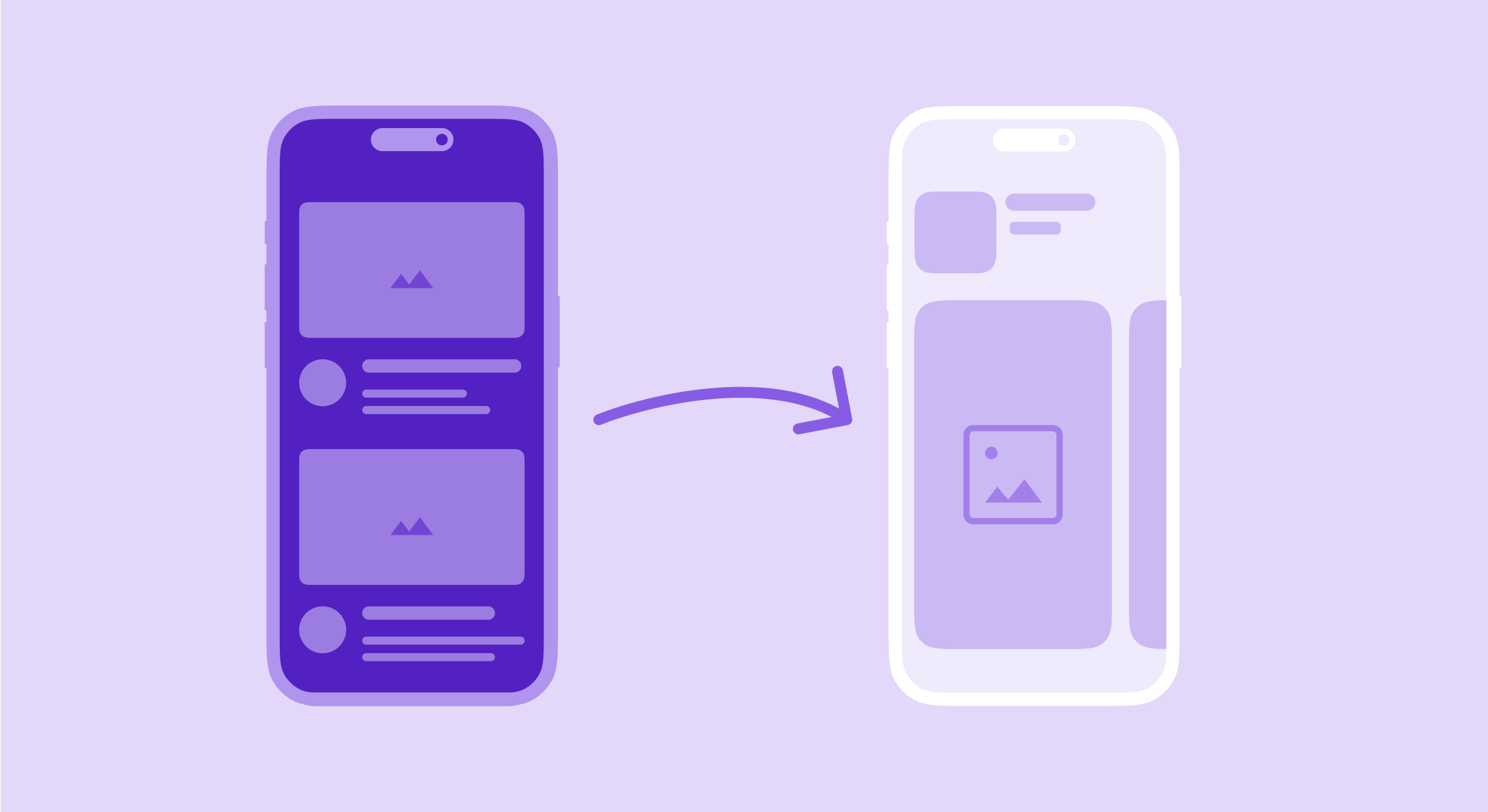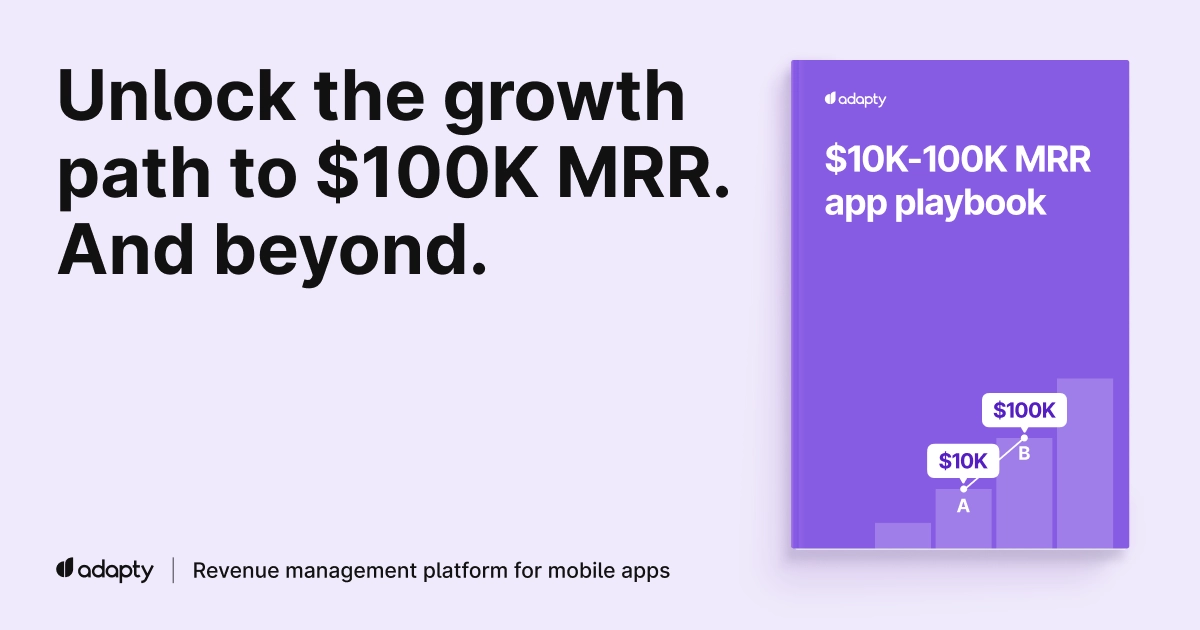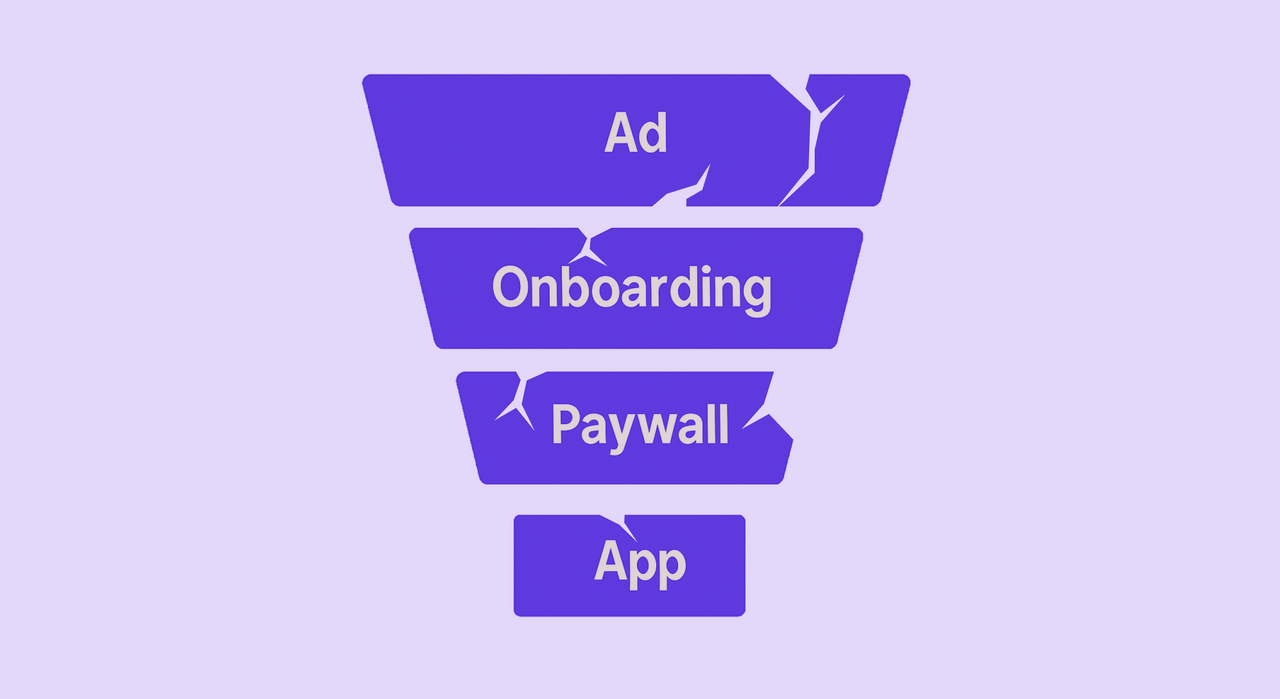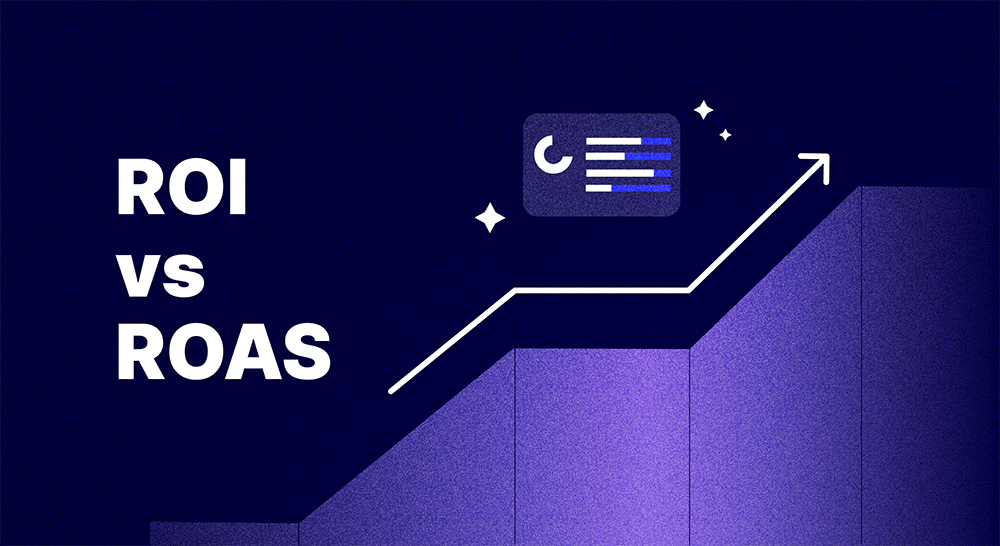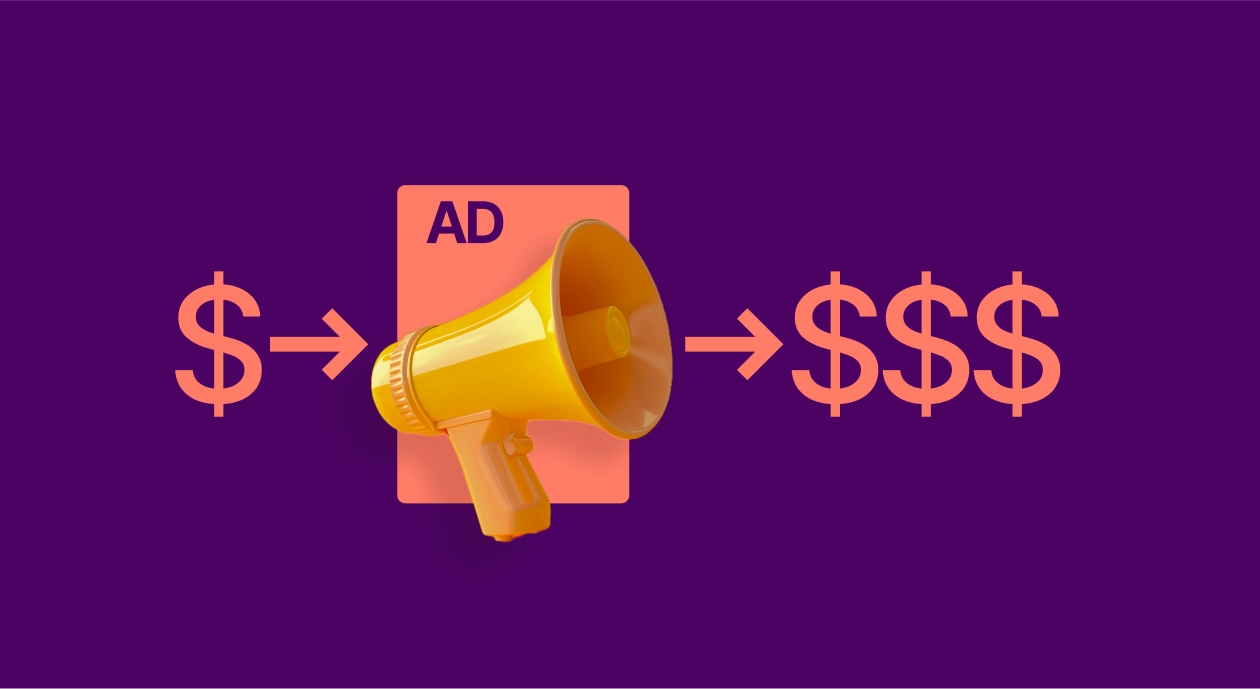Mobile marketing is broken. IDFA restrictions, rising ad costs, and poor tracking have made it harder than ever to acquire and retain users. Sending traffic straight to app stores no longer works as effectively as it did before.
Instead of losing users in app stores, web-to-app funnels keep the entire process on the web. You guide users through the entire journey from personalized onboarding to seamless payment. This approach restores full attribution, reduces fees by at least SIX TIMES, and increases user LTV through a better onboarding flow.
In this guide, we’ll explain web-to-app funnels, how they differ from traditional online funnels, and how they can significantly boost your app’s marketing performance.
What is a web-to-app funnel?
A web-to-app funnel is a marketing approach that first brings users to a dedicated funnel website before guiding them into a mobile app. Here, users engage with interactive content, complete a personalized onboarding flow, subscribe, and only then install the app.
Direct-to-app approach does the opposite. It pushes users straight to the app store, where you lose control. Attribution breaks. Conversion rates drop. Users leave without installing.
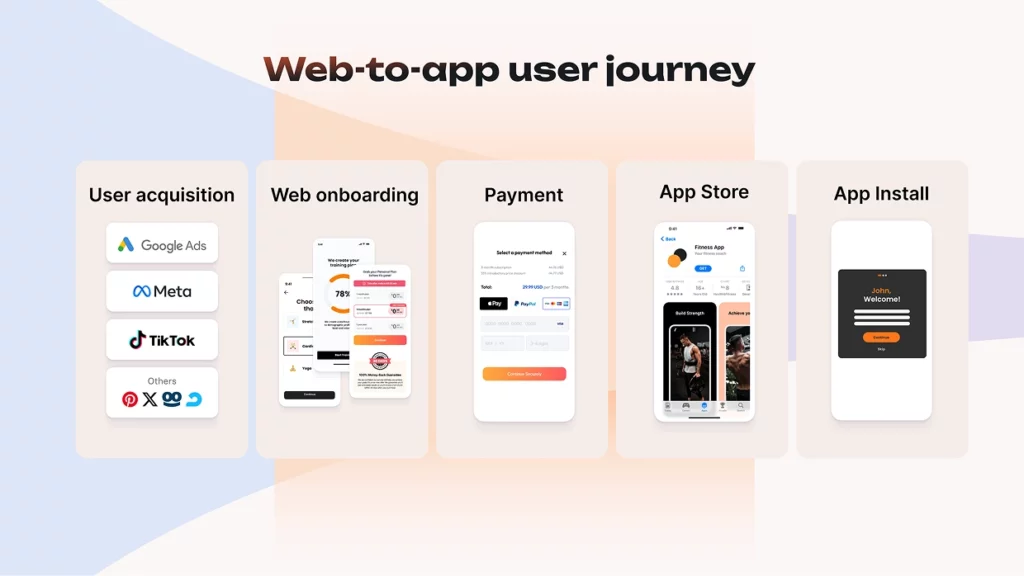
Key benefits of web-to-app
Web-to-app funnels help app businesses reduce platform fees, improve tracking, and create a smoother user journey. Here’s why more apps are choosing this approach:
1. Better tracking and attribution
Since Apple’s ATT update, tracking user behavior has become much harder. Web-to-app funnels fix this by collecting first-party data on a landing page before sending users to the app. This gives better attribution and more control over ad campaigns.
2. Lower platform fees
App stores take 15–30% of every in-app purchase. With web-to-app, payments happen on the web, cutting fees down to just 2-5%. This means more revenue and more budget to reinvest in growth.
3. Faster access to revenue
App store payouts can take up to 60 days, which slows down reinvestment. Web payments arrive within 1–2 days, so you can immediately scale campaigns and test new strategies.
4. Higher user engagement and lifetime value
Web-to-app funnels allow you to personalize onboarding, making users more likely to convert, subscribe, and stick around.
Real apps are already seeing the impact of web-to-app. In just three months, one subscription app increased its ROAS by 80% by adding this model. See how they did it in this case-study.
How a web-to-app funnel works
A web-to-app funnel guides users from initial engagement to app installation and subscription. Here’s a detailed breakdown:
1. Attracting users with compelling ad creatives
Getting users into your funnel starts with ads that work. Here’s what it takes:
- Creatives at scale. You need hundreds of ad variations: static, video, interactive. Only 1 in 100 will be a winner. No iterations = no profit.
- Diverse platforms. Facebook, TikTok, Pinterest, Google – test broadly, double down on what delivers the cheapest conversions.
- Serious budget. Testing a web-to-app funnel properly takes at least $15,000–$30,000. No budget = no meaningful data, no scaling.
2. Engaging users through personalized onboarding experiences
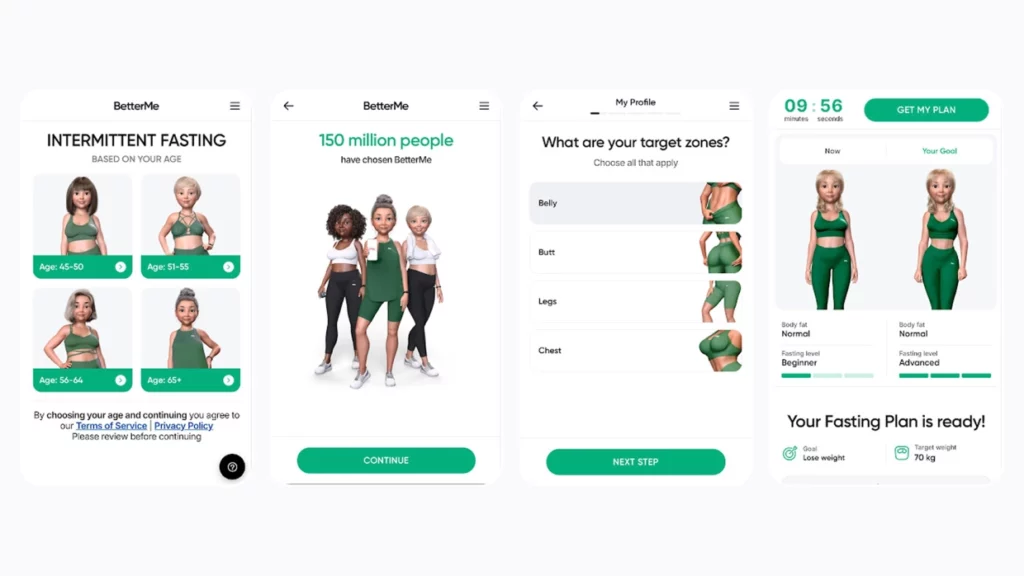
Web onboarding is where users decide to convert or drop off. What makes it work:
- Quizzes that sell. A great quiz filters high-intent users, delivers instant value, and moves them toward the next step. A fitness app can predict weight loss goals, making the user more likely to commit.
- Content that matters. Though you may use ChatGPT for ideating quizzes, generic info won’t work. Web onboarding should provide real insights that build trust and increase conversions. Nutrition tips, financial strategies, or progress tracking make the experience feel valuable.
- Personalization that hooks. Users engage more when onboarding feels tailored. Dynamic quizzes, adaptive content, and custom recommendations make the experience relevant and increase conversion rates.
3. Seamless payment flow
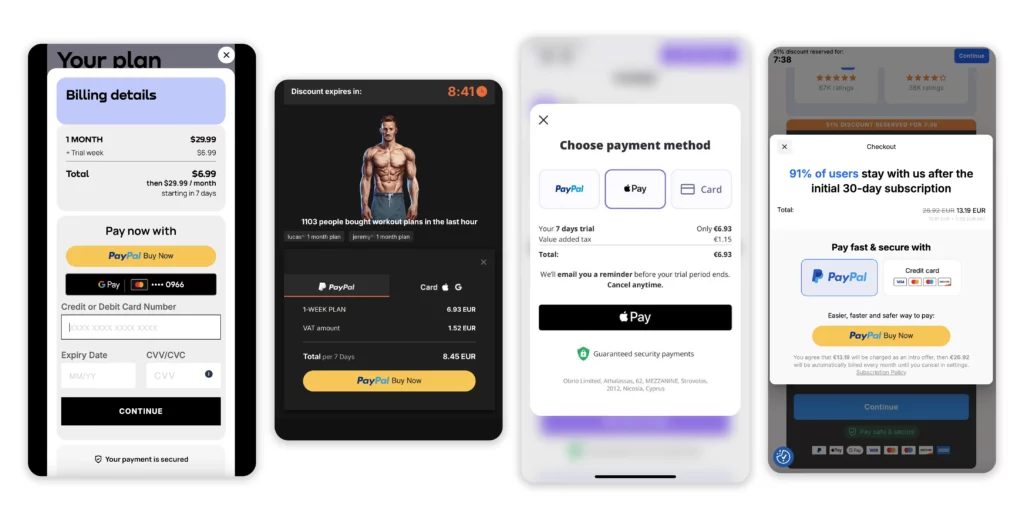
A frictionless payment process is vital for conversion. Key considerations include:
- Multiple payment options. Offer various payment methods, such as Apple Pay, credit cards, and PayPal, catering to user preferences. Pro tip: If Apple Pay is set as a default payment method, CR is 20% higher.
- Optimized checkout experience. Ensure the checkout process is smooth and intuitive to minimize drop-offs. This includes clear pricing, minimal steps, and reassurance about payment security.
4. Redirecting users from web to app
A seamless transition keeps users engaged. Here’s how to match them with their subscriptions:
- Email-based matching captures user data during onboarding for instant login after install. Requires backend setup.
- Auto-login via deep link takes users straight into the app without a login screen. Can fail if deep links break.
- Magic link login sends a password-free login link to email. Doesn’t work for invalid addresses.
- Account creation in the funnel ensures user data is stored before install. Adds a login step and backend complexity.
5. Continuous optimization and scaling
A web-to-app funnel is an ongoing process of testing, analyzing, and scaling.
- Test relentlessly. A/B test ad creatives, onboarding flows, and payments. Small tweaks can drive massive gains.
- Analyze every step. Track drop-offs, conversion rates, and user feedback. Fix weak spots before they break your funnel.
- Scale what works. Double down on winning strategies. Cut losers. The fastest optimizers win.
Who benefits the most from web-to-app funnels?
Web-to-app funnels are most effective for products that offer some level of personalization. The ability to provide immediate value to the user significantly increases conversion rates. Here’s which categories perform best with this approach:
1. Health & Fitness apps
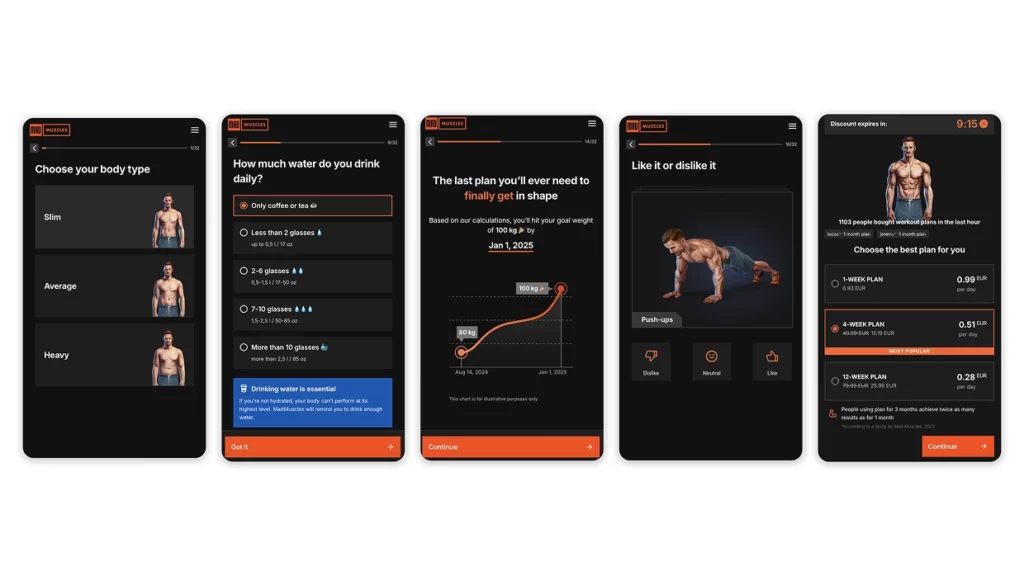
Web-to-app works best when users need a personalized experience. Health & Fitness is a perfect fit.
- Quizzes pre-qualify users. Asking about fitness level, diet, or weight loss goals makes recommendations feel tailored.
- Solution sneak peek. Show users a preview of the app’s value. Custom meal plan or a sample workout builds urgency and increases install rates.
- Building trust before install. Featuring success stories, expert recommendations, or before/after results reassures users they’re making the right choice.
- Instant value. Personalized plans make users more likely to commit.
Best fit: Weight loss, home workouts, fasting, and nutrition tracking apps.
2. Astrology & horoscope apps

Astrology app users are some of the most engaged. They actively explore predictions, complete detailed onboarding, and seek deeper insights. Web-to-app funnels take advantage of this high intent.
- Strong personalization. Users want more than generic insights. They seek predictions about love, money, and life changes that feel tailored to them.
- Quizzes create exclusivity. Asking for a birth date and time makes the reading feel unique and personal. The more customized the experience, the stronger the engagement.
- Mystery drives conversions. Web onboarding can tease hidden insights or exclusive revelations. The only way to unlock them is by installing the app.
Best fit: Astrology, tarot reading, and dream interpretation apps.
3. Fashion & style recommendation apps
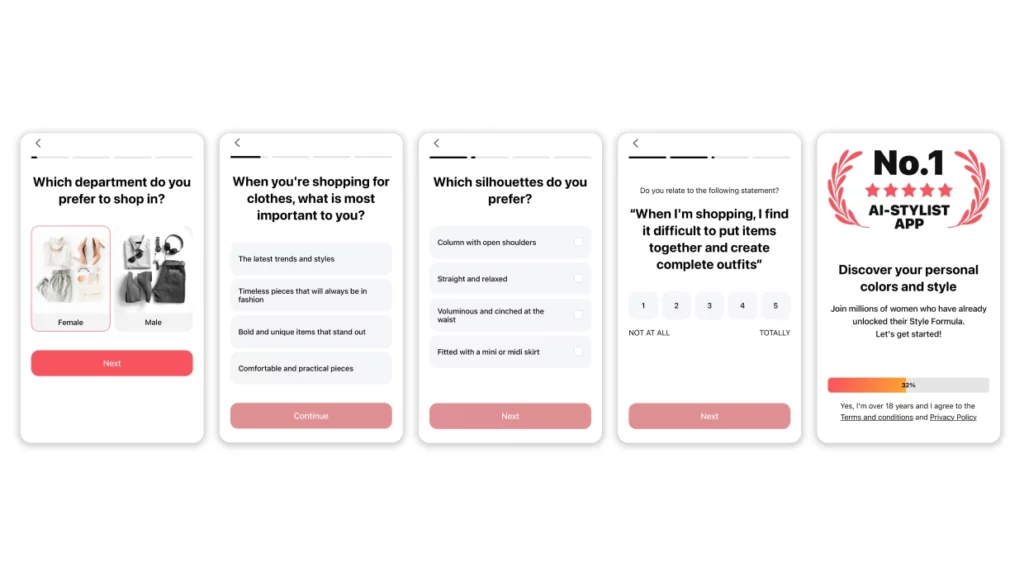
Personalized styling is another perfect fit for web-to-app. Instead of treating users as generic shoppers, apps can:
- Ask about eye color, skin tone, and body shape to generate custom styling suggestions.
- Recommend outfits based on budget, lifestyle, and brand preferences.
Best fit: Personal styling, wardrobe planners, fashion shopping guides.
4. Education & learning apps
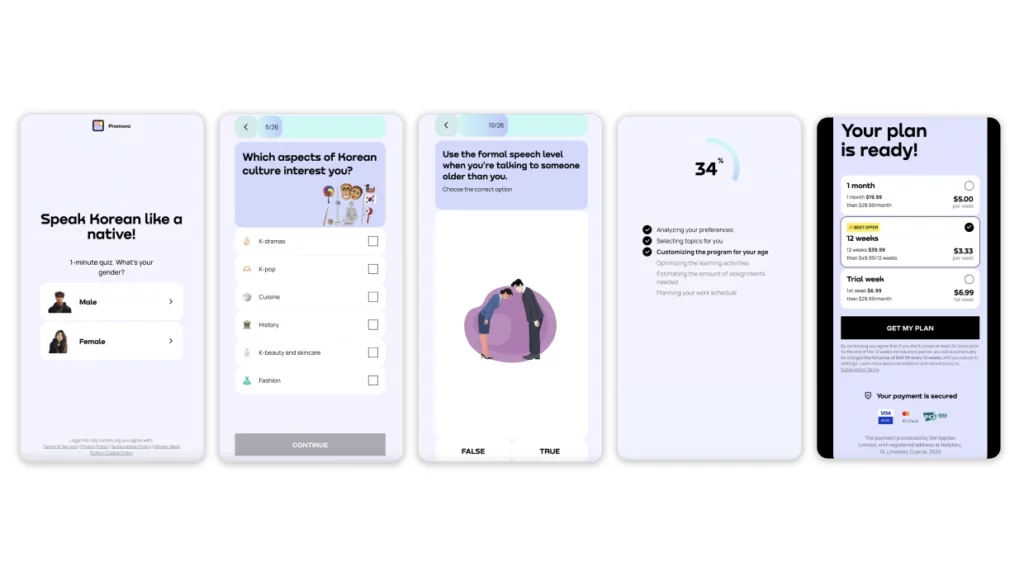
Web-to-app funnels also work well for learning apps. Users often hesitate before committing to a new course or skill.
- Quizzes can assess the user’s level and suggest a tailored learning plan.
- Immediate value drives conversions. For example, language learning apps can give users a free vocabulary test before prompting them to install.
Best fit: Language learning apps, book summary apps (e.g., Headway), professional skills training.
5. Gaming apps: early exploration
Web-to-app for gaming is still evolving. Since most games are free-to-play, purchases happen after users engage with gameplay. To make this model work, the web funnel needs to integrate gaming elements before installation, which adds complexity and cost.
But gaming isn’t the only edge case. Bold creative vision and new onboarding strategies can make web-to-app work literally for any app category. Be inventive and set trends, everyone loves innovators!
Common challenges in web-to-app funnels and how to fix them

Even the best web-to-app funnels hit roadblocks. Ignore the small cracks, and soon your funnel turns into a black hole for ad spend. Here’s what can go wrong and how to fix it.
High drop-off rates on the landing page
Many users click the ad but leave without taking action. To fix this:
- Test more ad creatives. If users don’t engage, the messaging might be off. Rotate and optimize creatives constantly.
- Make the CTA clear and compelling. Ensure the call to action is direct and benefit-driven.
- Improve landing page load speed. Slow pages kill conversions. Aim for under 2 seconds.
Poor quiz completion rates
Quizzes are key to engaging users, but drop-offs happen if they feel too long or irrelevant.
- Keep it short. Only ask essential questions.
- Make it engaging and tailored. Use dynamic elements like progress bars and personalized feedback.
- Ensure mobile-friendliness. Over 80% of users interact via mobile, so optimize for smaller screens and native browsers, including Instagram, Facebook and TikTok.
Payment drop-offs before subscription
If users abandon payments, revenue takes a hit. To fix this:
- Offer multiple payment methods. Apple Pay (as a default!), Google Pay and PayPal can reduce friction.
- Highlight security and guarantees. Trust badges, shield icons, HTTPS, and refund policies boost confidence.
- Simplify the checkout flow. Minimize steps and distractions.
Read an essential guide about payments in subscription funnels.
Deep link failures and login issues
Users must seamlessly transition from web to app, but broken links and login friction can lead to churn.
- Regularly test deep links. Ensure they open the correct in-app page.
- Provide a fallback login option. Magic links or email-based login can prevent lockouts.
Scaling issues and ad fatigue
What works today may not work tomorrow. Scaling web-to-app funnels requires continuous iteration.
- Rotate ad creatives frequently. Test new angles and refresh assets to combat ad fatigue.
- Analyze funnel data regularly. Track drop-off points and optimize weak areas.
- Adapt to platform changes. Algorithms shift, so adjust bidding strategies and targeting accordingly.
By identifying and fixing these challenges, you can maximize conversion rates and long-term success.
Building web-to-app funnels: in-house vs. external platforms
Setting up a web-to-app funnel requires multiple components. Starter pack here is high-quality ad creatives, a well-optimized landing page, backend development, and a seamless payment flow. Businesses can approach this in two ways: in-house or with an external funnel tool like FunnelFox.
| In-house | FunnelFox | |
General | Works good for large companies | Best choice for small and medium businesses |
Technical complexity | Significant – deep linking, analytics, and payment flows require backend work | Minimal – everything is pre-built and ready to use |
Time to launch | Months – requires extensive development and testing | Hours – ready-to-go infrastructure speeds up deployment |
Custom settings & control | Full control over every step of the funnel | Limited – platforms offer customization, but within predefined structures |
Total cost | High – significant upfront investment and ongoing expenses | Lower – reduces engineering costs and speeds up ROI |
For most app marketers, an external funnel platform removes the complexity and speeds up results. Instead of spending months building custom funnels, businesses can focus on scaling their acquisition strategy. Schedule a demo with the FunnelFox team to get your web-to-app strategy.
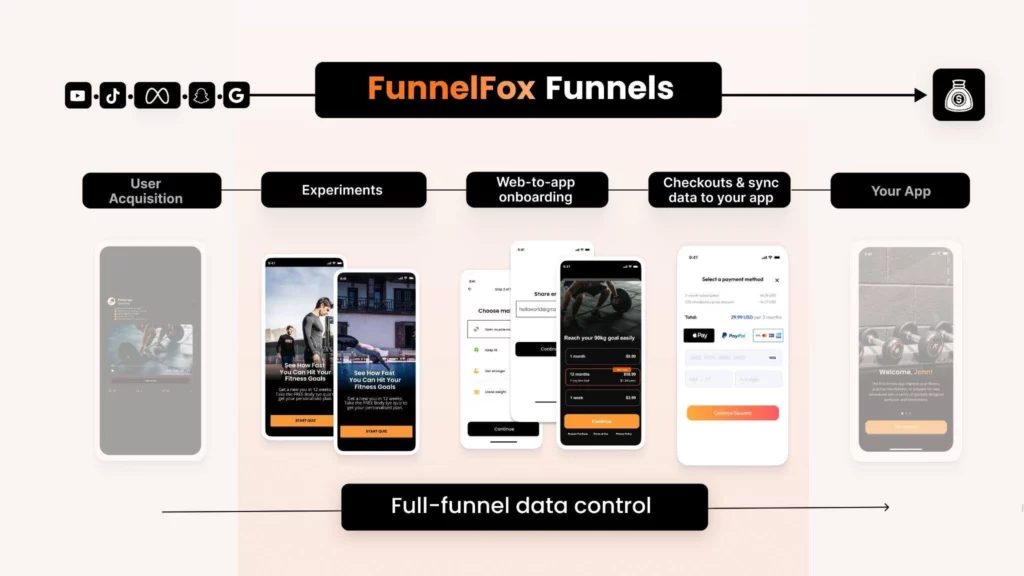
Conclusion
Tracking is gone. Ad costs are rising. Platform fees are eating into your revenue. Web-to-app fixes it. It restores attribution, cuts fees from 30% to 5%, and boosts conversions with a fully optimized journey.
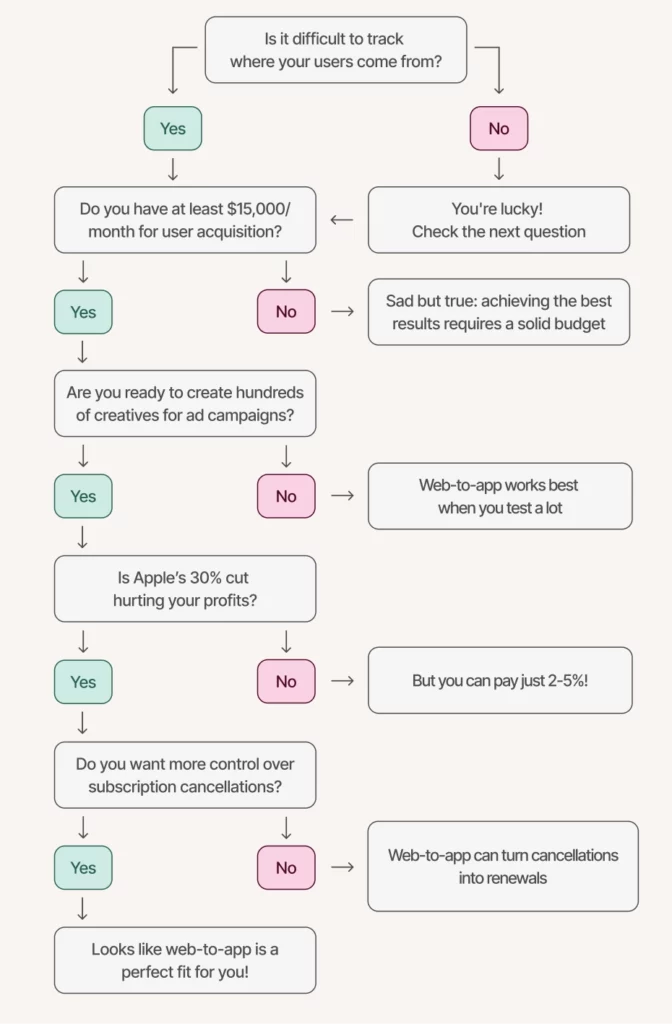
If web-to-app looks like the right fit for you, it’s time to test it. Book a demo with FunnelFox to launch your funnel and improve your revenue and LTV.

